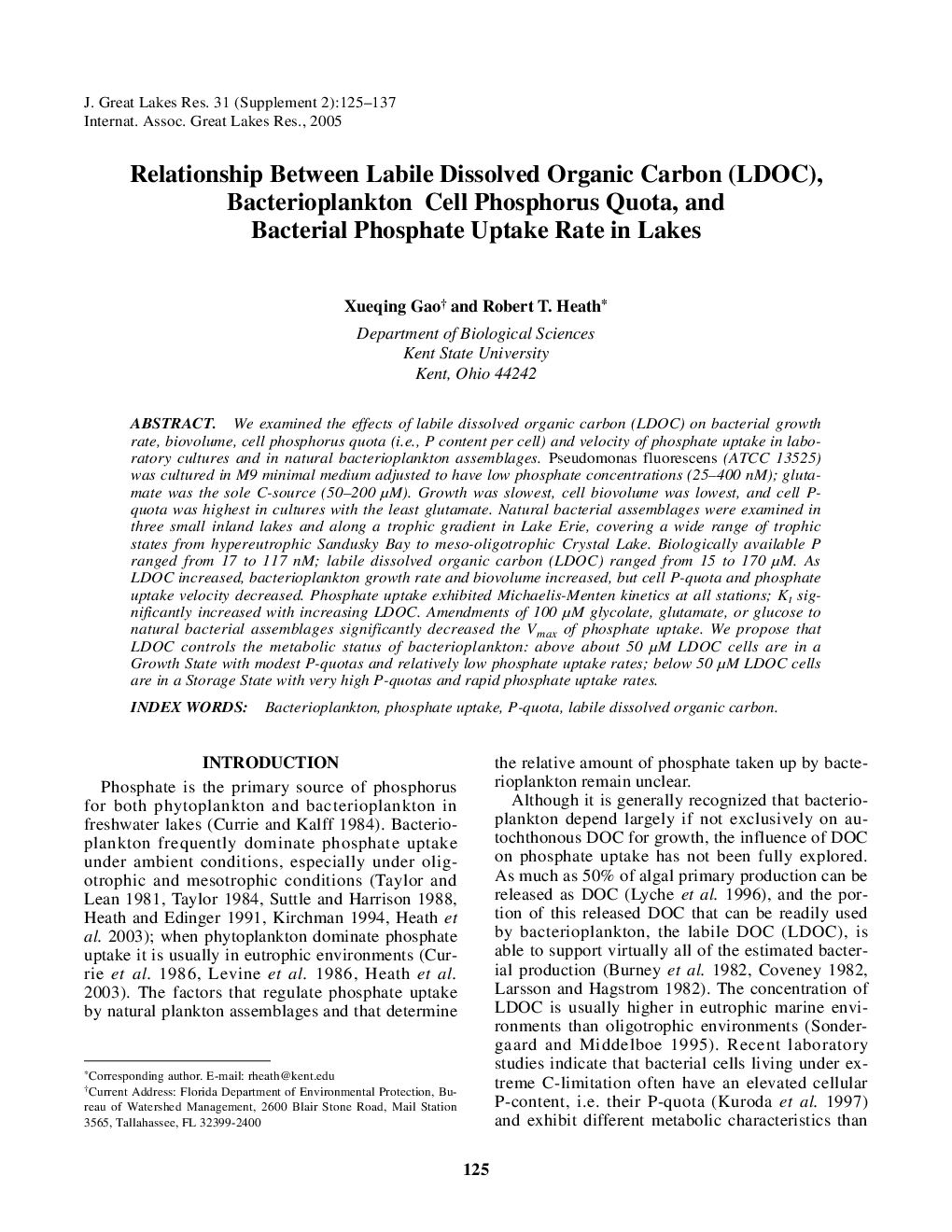| Article ID | Journal | Published Year | Pages | File Type |
|---|---|---|---|---|
| 9450244 | Journal of Great Lakes Research | 2005 | 13 Pages |
Abstract
We examined the effects of labile dissolved organic carbon (LDOC) on bacterial growth rate, biovolume, cell phosphorus quota (i.e., P content per cell) and velocity of phosphate uptake in laboratory cultures and in natural bacterioplankton assemblages. Pseudomonas fluorescens (ATCC 13525) was cultured in M9 minimal medium adjusted to have low phosphate concentrations (25-400 nM); glutamate was the sole C-source (50-200 μM). Growth was slowest, cell biovolume was lowest, and cell P-quota was highest in cultures with the least glutamate. Natural bacterial assemblages were examined in three small inland lakes and along a trophic gradient in Lake Erie, covering a wide range of trophic states from hypereutrophic Sandusky Bay to meso-oligotrophic Crystal Lake. Biologically available P ranged from 17 to 117 nM; labile dissolved organic carbon (LDOC) ranged from 15 to 170 μM. As LDOC increased, bacterioplankton growth rate and biovolume increased, but cell P-quota and phosphate uptake velocity decreased. Phosphate uptake exhibited Michaelis-Menten kinetics at all stations; Kt significantly increased with increasing LDOC. Amendments of 100 μM glycolate, glutamate, or glucose to natural bacterial assemblages significantly decreased the Vmax of phosphate uptake. We propose that LDOC controls the metabolic status of bacterioplankton: above about 50 μM LDOC cells are in a Growth State with modest P-quotas and relatively low phosphate uptake rates; below 50 μM LDOC cells are in a Storage State with very high P-quotas and rapid phosphate uptake rates.
Keywords
Related Topics
Physical Sciences and Engineering
Earth and Planetary Sciences
Earth and Planetary Sciences (General)
Authors
Xueqing Gao, Robert T. Heath,
